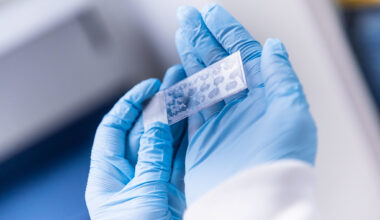Did you know there is a “rabbit line” located deep below the UBC campus? This underground pipeline runs 2.5 km from TRIUMF to the Djavad Mowafaghian Centre for Brain Health at the UBC Hospital and is used to transport radiopharmaceuticals used in research.
TRIUMF, Canada’s particle accelerator centre, has been producing medical isotopes for decades. Over the years, TRIUMF and UBC have been working collaboratively to study brain function related to different neurodegenerative conditions, dating back to the opening of the UBC Imaging Research Centre by Queen Elizabeth II in 1983.
Beginning with early studies into the origins of Parkinson’s disease using a TRIUMF-built positron emission tomography (PET) scanner in the 1980s, this partnership has evolved over the years into a multi-modal neuroimaging program. Research today aims to advance the search for novel therapeutic targets and help identify the biomarkers produced by the early onset of brain disorders.
Depending on the half-life of a particular isotope, medical isotope compounds can lose their effectiveness in a matter of minutes. The underground “rabbit line” overcomes this issue by using an air pressure of 100 psi (pounds per square inch) to transport the rabbit from TRIUMF to the UBC Hospital in approximately 2.5 minutes, with a peak speed of 100 km/hour and an average of 60 km/hour. Each “rabbit” consists of a glass vial with a dosage of the requested radiopharmaceutical in liquid form and is protected by an aluminum capsule.
At the Charles E. Fipke Integrated Neuroimaging Suite located within the Djavad Mowafaghian Centre for Brain Health, PET is a powerful, non-invasive technique that is used by researchers to study many aspects of brain function. When radiopharmaceuticals are injected into the body, the isotope decays and emits gamma rays, which can be detected and visualized using a PET scanner to reconstruct images of the brain. These scans can show if a particular molecule or compound is building up in the brain and how well blood is flowing to different organs or tissues.
“PET was instrumental in discovering the neurochemical underpinning of the placebo effect,” says Dr. Vesna Sossi, professor and director of the UBC PET-MRI Imaging Centre. “Just believing that a treatment will have a benefit can trigger a neurotransmitter release leading to some treatment-independent therapeutic benefits; such placebo-related neurotransmitter release was indeed detected by PET.”
TRIUMF produces radioisotopes (carbon11 and fluorine18) using its TR-13 medical cyclotron and incorporates them into radiotracers within radiochemistry labs. Several types of tracers are sent to UBC where they are used to study various brain diseases such Parkinson’s, Alzheimer’s and mood disorders. With the Canada Foundation for Innovation and donor-funded acquisition of a hybrid GE PET/3T-MRI scanner, UBC researchers can now investigate new aspects of brain function by combining PET and MRI, and are including studies in other areas such as multiple sclerosis, traumatic brain injury, addiction and aging.
“UBC has been relying heavily on TRIUMF’s expertise for PET tracer development and production. This successful collaboration has led to fundamental discoveries about brain function in health and disease,” says Dr. Sossi. “We are looking forward to it continuing and prospering, as there is exciting new research in neuroimaging and tracer development on the horizon.”
British YouTuber Tom Scott recently visited UBC to see how the rabbit line works – you can watch his video below.



